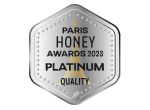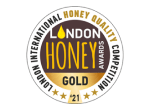Honey Production Transparency Hub

Purely Natural, Raw Organic Honey
Discover our pure organic raw unfiltered honey. It is naturally crystallized and harvested without smoke, maintaining its authentic purity and essence.

Troodos Mountain Natural Gift
Our honey, sourced from the Troodos mountains in Cyprus, reflects the area's rich biodiversity and commitment to natural and sustainable beekeeping, ensuring harmony with the environment.

Ethical & Sustainable Honey Production
Our honey represents a commitment to excellence and ethics, sourced with transparency and produced sustainably from its origin to your home, reflecting our unwavering dedication to maintaining natural purity.

Key point of interest:
Apianthos honey has 0 chemicals or antibiotics
Chemicals, pollutants & pesticides:
Unfortunately, bees and their honey can be contaminated by chemicals and pollutants, usually from products used by beekeepers to control pests in hives but also from exterior contaminations.
All our honeys are tested for chemicals and pollutants, but none have been found.
Antibiotics:
Antibiotics are still widely used in bee-keeping for treatment against bacteria; honey can also be contaminated when bees drink water next to animal farms, where antibiotics used on animals end up in nearby water sources.
All our honeys are tested for antibiotics, but none have been found.
Free acids: should not exceed 50 meq/ kg with the exception of citrus and honeydew honeys
Glucose and fructose content: Usually superior to 60% for most honey types
Moisture Content (Humidity): should not exceed 20% for most honeys.
Electrical Conductivity: should not exceed 0.8 mS/cm
Content of non-water-soluble substances: should not exceed 0.1%
Diastase activity: should be superior to 8 DN
Sucrose content: should never exceed 5%
HMF content: should not exceed 40 mg / kg

Gyroscopic analysis:
Gyroscopic analysis is the analysis of the different types of Pollens in honey.
Bees collect Pollens and nectars from Flowers; the analysis of the pollen in honey proves the geographical origin of honey; it is important to note that it does not always mean that the honey will have the flavor of the plants the pollen comes from; Nectar has a greater influence on taste!



